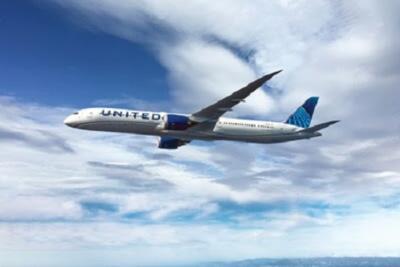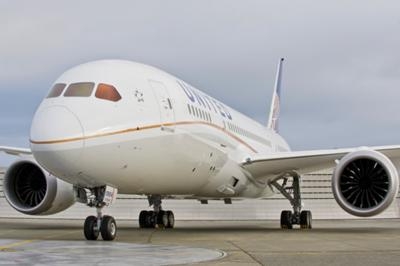United Next Program Promises Better Service and Economics
In furtherance of the United Next fleet renewal and standardization initiative, Chicago-based United Airlines has placed orders for an additional 110 aircraft, deliveries of which are to commence in 2028.

The legacy air-carrier converted previous options and purchase rights into firm orders for fifty Boeing 787-9s, deliveries of which will span the three-year period between 2028 and 2031. The company secured, also, new options for up to fifty additional Boeing 787s—options the airline will reportedly exercise before 2030.
United CEO Scott Kirby stated: "We're building a bright future at United and this order takes our already successful United Next plan into the next decade and beyond. Our planning and focus on the long-term have helped us surge past other airlines that stood still. I'm convinced our strategy is the right one as we continue to add new, larger aircraft to take full-advantage of our growing flying opportunities both internationally and domestically."
All told, United expects to take delivery of approximately eight-hundred new narrow-body and wide-body aircraft between 2023 and year’s-end 2032.
A key component of the airline’s United Next plan is growth in gauge—which is to say it will acquire and operate larger aircraft with higher seating capacities over routes currently serviced by smaller planes. Up-gauging, as the practice is known in the clipped patois peculiar to Part 121 operators, contemporaneously benefits the airline and its customers insomuch as United operates out of the largest U.S. markets—e.g., Chicago (ORD), Denver (DEN), Houston (IAH), Los Angeles (LAX), Newark (EWR), San Francisco (SFO), and Washington, D.C. (IAD).
In 2019, United’s fleet averaged 104-seats per North American departure—among the lowest in the industry. By 2027, the air-carrier expects to raise capacity to 145-seats per North American departure—a jump of more than forty-percent.

Currently, United’s firm orders include 180 Airbus A321neo and over 370 Boeing 737 MAX-family aircraft. As the aforementioned jets feature higher cabin seating capacities than the aircraft they replace, the addition of such to United’s fleet will drive the airline’s average seats-per-departure higher still, while lowering, ostensibly, per-seat costs.
United, in 2023, is the largest trans-Atlantic and trans-Pacific air-carrier. The airline’s extant firm orders for a total of 150 new Boeing 787-family jets—Boeing’s largest commitment for the type—will facilitate simplification of United’s international fleet, and standardize the training of the pilots and mechanics by whom said fleet is respectively flown and maintained.
The 787, by virtue of its constituent material and aerodynamic technologies, is eminently conducive to the aims of United Airlines’s United Next initiative. The General Electric GEnx family dual-rotor, axial-flow, high-bypass turbofan engines by which 787-family aircraft are powered are quieter and more fuel-efficient than previous generation powerplants. Moreover, the mills are designed to run normally on Sustainable Aviation Fuel (SAF)—the makers of which assert the stuff reduces CO2 emissions by as much as eighty-percent over conventional petroleum jet fuels. According to Boeing, operators opting to run their 787s on petroleum jet fuels will realize per-seat reductions in engine-emissions of up to 25-percent lower than legacy wide-body aircraft.
All 787-9 models are stock configured with 298 seats comprising: thirty business-class, 21 premium economy-class, and 247 economy-class.

The 787-10, conversely, is capable of accommodating up to 344 passengers, a more typical configuration of the aircraft, however, accommodates 318 passengers by way of 44 business-class, 21 premium-plus, 54 economy-plus, and 199 economy seats. The 787-10 sports 6,187-cubic-feet of cargo volume, the largest dimmable windows of any commercial aircraft, and affords passengers exceptional comfort by dint of enhanced cabin pressurization and humidity controls.
The operating economics of Boeing’s 787 family will enable United to better service extant routes while adding new destinations and ultra-long-range routes to its service network. The 787-9 is capable of flying 7,565-nautical-miles non-stop. The larger 787-10, which concedes endurance for capacity but still manages a non-stop range of 6,330-nautical-miles, will allow United to service numerous popular, heavily-traveled, international and regional routes.
United expects its fleet, by 2030, will comprise fully 75-percent new-generation aircraft.
 ANN's Daily Aero-Term (05.19.24): Back-Taxi
ANN's Daily Aero-Term (05.19.24): Back-Taxi Aero-News: Quote of the Day (05.19.24)
Aero-News: Quote of the Day (05.19.24) Aero-News: Quote of the Day (05.20.24)
Aero-News: Quote of the Day (05.20.24) ANN's Daily Aero-Term (05.20.24): Blind Speed
ANN's Daily Aero-Term (05.20.24): Blind Speed ANN's Daily Aero-Linx (05.20.24)
ANN's Daily Aero-Linx (05.20.24)





